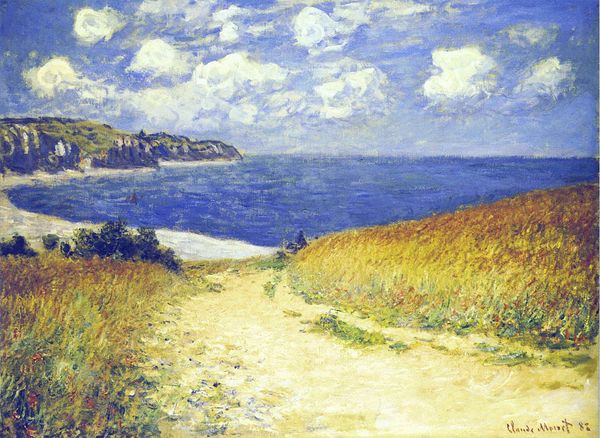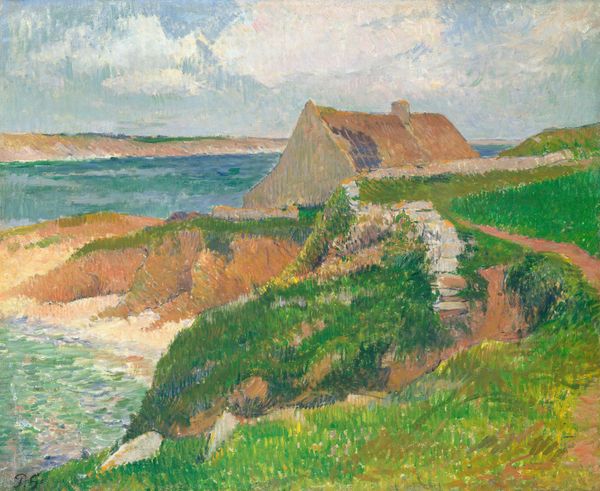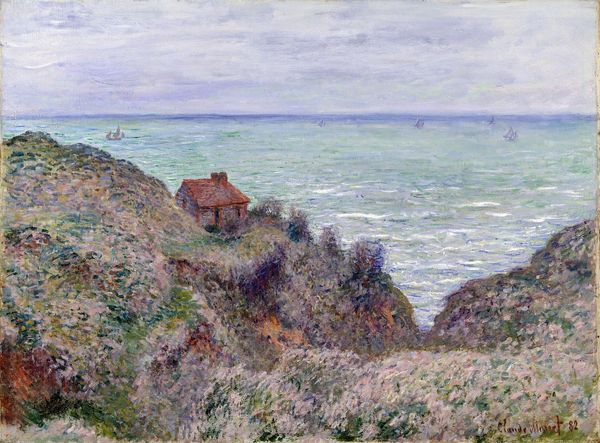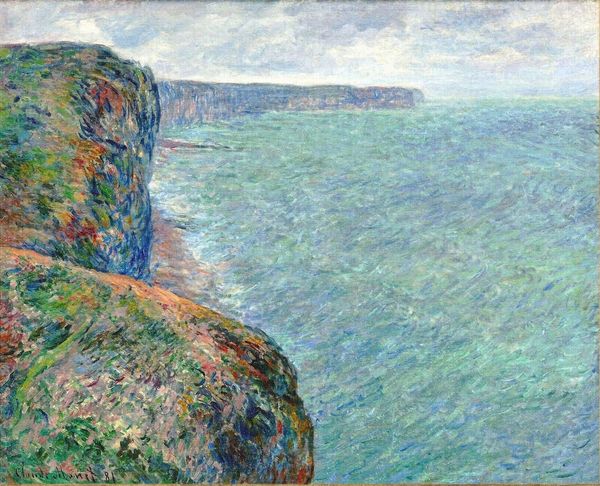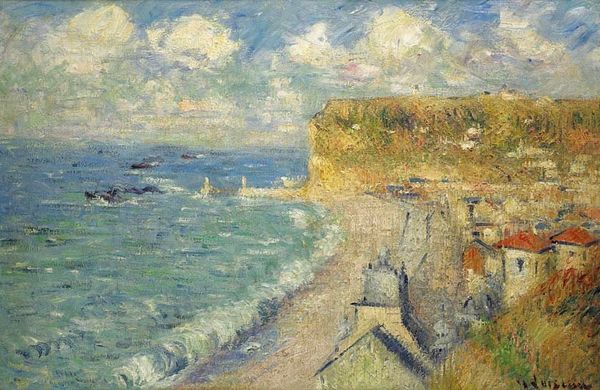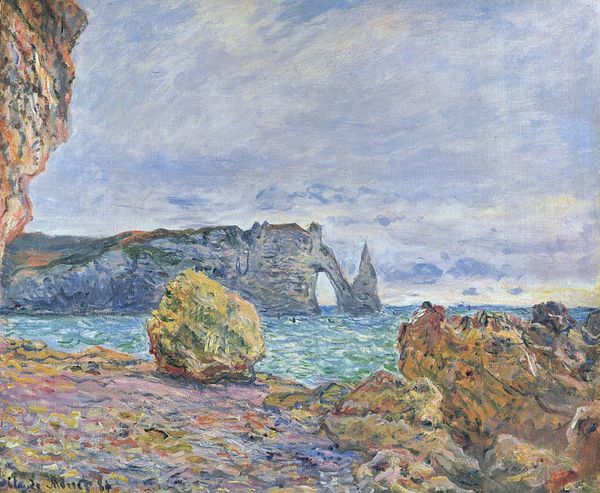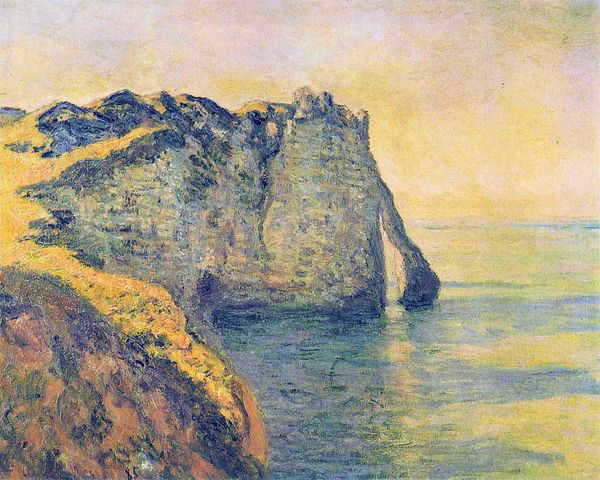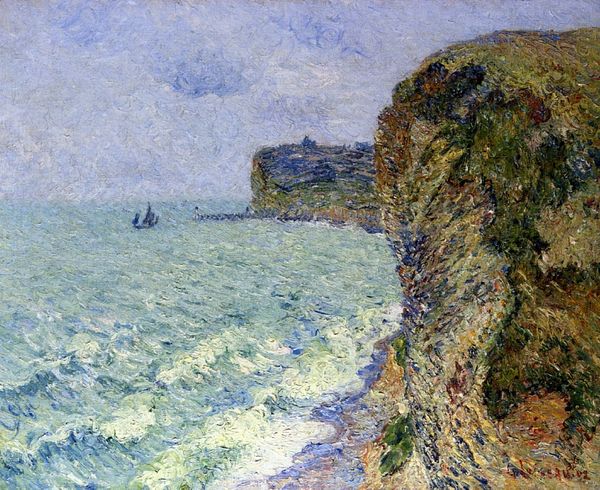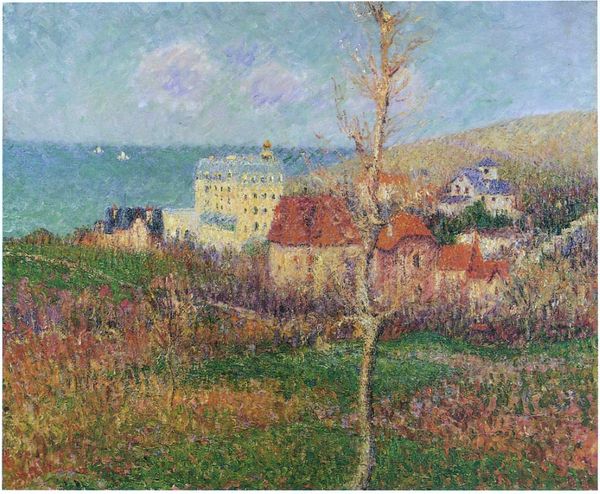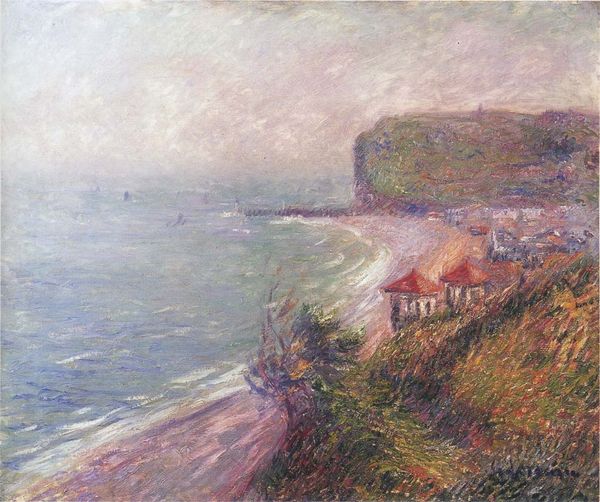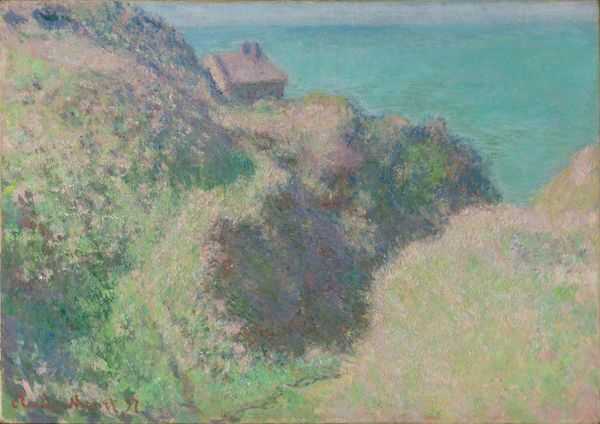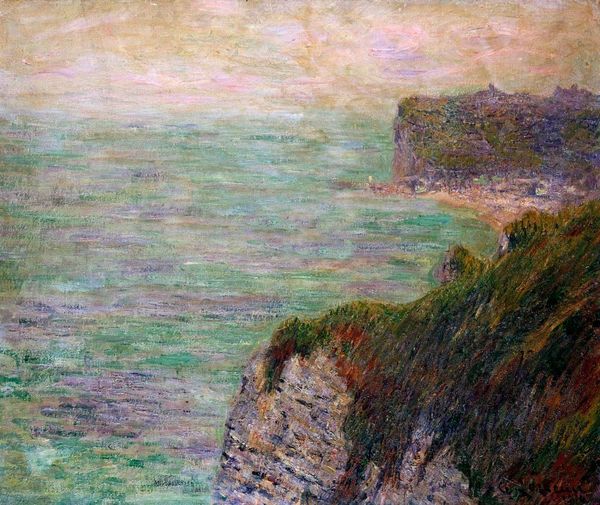
Copyright: Public domain
Curator: We’re looking now at "Fecamp," painted around 1920 by Gustave Loiseau. The medium is oil on canvas, portraying a coastal town in Normandy, France. What is your immediate response to the work? Editor: A breezy, overcast day at the beach. There’s a sense of tranquility but also isolation. The textures are fascinating – almost like tapestry woven with color. The dominant warm colors of the roof, cliffs, and vegetation feel protective over the sea, in contrast with the muted and somber water and sky. Curator: It is interesting that you use the word “protective”. Loiseau, as a post-impressionist, often depicted landscapes reflecting the changes happening in France. This canvas would have been produced soon after the devastations of the first world war. Can we assume it represents an optimistic return to tradition? Is this harbor, a traditional haven, portrayed as an invitation of protection for those returning from war? Editor: It could very well be. There’s a definite nostalgia imbued in the image. The high vantage point almost gives it a map-like quality, symbolizing ownership and pride. Perhaps this painting aimed to reinstate hope in the beauty and promise of the French landscape. And the location certainly reinforces your theory: historically harbors have always been a powerful sign of welcome and refuge. Curator: He had, after all, exhibited alongside the more progressive painters of his era. While some artists actively questioned traditions in the wake of the conflict, Loiseau seems to offer a more conservative vision, celebrating the enduring aspects of French life, or at least, aspects he wants to remain alive in cultural memory. This feels distinctly separate from those associated with some of the emerging avant-gardes who embraced rapid urban development as the basis for a new artistic identity. Editor: I think you are correct. Loiseau has offered here an uncomplicated representation. It does celebrate a slower life of simpler structures in a chaotic historical moment. What he is offering the viewer is an untainted representation of a beautiful place. The town becomes a symbol of endurance. Curator: An interesting argument. Well, whatever Loiseau's exact intentions, "Fecamp" serves as a poignant reminder of the enduring allure of the French coastline and its capacity for both beauty and historical significance. Editor: Yes, and how artistic expressions evolve according to moments in history and in social change. It is really so compelling.
Comments
No comments
Be the first to comment and join the conversation on the ultimate creative platform.

